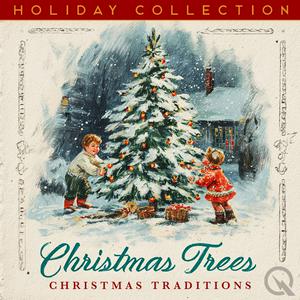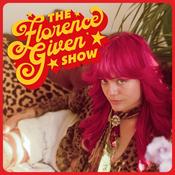1 episodes

Christmas Trees
13/12/2024 | 9 mins.
The Christmas tree is more than just a festive decoration; it is a beloved tradition steeped in centuries of history, evolving from ancient rituals to a universal symbol of the holiday season. Its evergreen branches and shimmering decorations bring light and warmth to homes during the darkest days of winter, while its story reflects a fascinating blend of cultural, religious, and mythological influences. Exploring the origins, adaptations, and enduring appeal of the Christmas tree reveals how a simple evergreen has become a cornerstone of Christmas celebrations worldwide. The roots of the Christmas tree tradition lie deep in the ancient world, where evergreen plants were symbols of resilience and vitality during the harsh winter months. Long before the advent of Christianity, many cultures revered evergreens as sacred. The Celts and Germanic tribes of northern Europe believed that evergreens held magical properties. During the winter solstice, they brought boughs of fir and holly into their homes to ward off evil spirits, honor nature spirits, and celebrate the return of the sun. These pagan rituals, centered around the promise of renewal and the enduring power of life, laid the foundation for the modern Christmas tree. In ancient Rome, evergreens also played a role in midwinter festivities. During Saturnalia, a festival dedicated to the agricultural god Saturn, Romans decorated their homes and temples with greenery to symbolize life and fertility. The practice of adorning spaces with evergreen plants during the winter solstice was common across many cultures, reflecting a shared human desire to bring nature’s vitality indoors during the coldest, darkest time of the year. As Christianity spread across Europe, it absorbed and adapted many of these pagan customs. The early church sought to reframe the symbolism of evergreens within a Christian context, emphasizing themes of eternal life and salvation through Christ. By the Middle Ages, the evergreen tree began to take on a more explicitly Christian significance. One early precursor to the Christmas tree was the "Paradise Tree," a fir tree adorned with apples, representing the Tree of Knowledge from the Garden of Eden. These trees were often used in medieval mystery plays performed on December 24, the feast day of Adam and Eve. Over time, the Paradise Tree tradition became intertwined with Christmas celebrations. The legend of Martin Luther, the German Protestant Reformer, further popularized the Christmas tree in the 16th century. According to the story, Luther was inspired by the beauty of a starlit forest one winter night. To recreate the wonder of that scene, he brought an evergreen tree into his home and decorated it with candles. While the historical accuracy of this tale is debated, it reflects the growing association of the Christmas tree with light, wonder, and the divine. In Germany, where the Christmas tree tradition was firmly rooted, families began to decorate trees with a variety of items, including candles, nuts, fruits, and sweets. The practice spread across Europe during the 17th and 18th centuries, aided by the influence of German aristocracy. By the early 19th century, the Christmas tree had become a beloved custom in Germany and was gaining popularity in other parts of Europe. The Christmas tree’s journey to the English-speaking world can be attributed to Queen Victoria and her German-born husband, Prince Albert. In 1848, an illustration of the royal family gathered around a beautifully decorated Christmas tree at Windsor Castle was published in a popular London newspaper. The image captivated the public, and the Christmas tree quickly became a fashionable addition to Victorian holiday celebrations. Within a few years, it had also gained widespread acceptance in the United States, thanks to German immigrants and the influence of Victorian culture. During the Victorian era, the Christmas tree became a focal point of family life and holiday festivities. Trees were adorned with handmade ornaments, strings of cranberries and popcorn, and candles. The use of candles carried deep symbolic meaning, representing Christ as the light of the world. However, the open flames posed a significant fire hazard. The invention of electric Christmas lights in the late 19th century revolutionized tree decoration, offering a safer and more colorful alternative. By the early 20th century, electric lights had become a standard feature of Christmas trees, adding to their enchanting glow. The Christmas tree tradition continued to evolve in the 20th century, shaped by cultural trends, technological advancements, and commercial innovations. Artificial trees, made from materials such as aluminum, plastic, and PVC, became increasingly popular in the mid-20th century. These artificial trees offered convenience and durability, appealing to families seeking a low-maintenance alternative to real trees. They also came in a variety of styles, from traditional green to metallic silver and even multicolored designs. While some purists argue that nothing can replicate the charm of a real tree, artificial trees have become a staple in many households. Ornaments, too, have evolved from simple handmade items to a vast array of designs that reflect personal tastes and cultural trends. Early ornaments were often made from natural materials, such as nuts, fruits, and carved wood. In the 19th century, glass-blown ornaments from Germany became highly sought after, setting the standard for the intricate, colorful decorations we see today. Modern ornaments range from heirloom pieces passed down through generations to playful, themed designs that celebrate pop culture, hobbies, and family milestones. The Christmas tree’s enduring appeal lies in its ability to adapt to changing times while retaining its core symbolism. It represents unity, hope, and the resilience of life, even in the darkest days of winter. For many, the act of decorating the tree is a cherished ritual that brings families together. Whether trimming the tree with glittering baubles, stringing lights, or placing the final star or angel on top, these moments create lasting memories and reinforce the bonds of love and togetherness. Public Christmas trees have also become iconic symbols of the season, bringing communities together and spreading holiday cheer. One of the most famous examples is the Christmas tree at Rockefeller Center in New York City. This tradition began in 1931, during the Great Depression, when construction workers erected a simple tree on the building site. Today, the Rockefeller Center tree lighting ceremony is a major event, attracting millions of viewers and heralding the start of the holiday season. Other cities, from London to Tokyo, host their own grand tree displays, each adding a unique cultural twist to the tradition. While the Christmas tree is universally associated with joy and festivity, its role and presentation vary across cultures. In Germany, trees are often adorned with wooden ornaments and candles, preserving the charm of earlier customs. In Scandinavian countries, natural and minimalist decorations, such as straw stars and ribbons, reflect the region's aesthetic values. In Japan, where Christmas is celebrated as a secular holiday, trees are often decorated with bright, whimsical ornaments that blend Western and Japanese influences. In recent years, the environmental impact of Christmas trees has become a topic of discussion. The debate between real and artificial trees has prompted many to consider the ecological implications of their choice. Real trees, often sourced from sustainable farms, are biodegradable and support local economies. However, their disposal can pose challenges, and cutting down trees for short-term use raises concerns for some. Artificial trees, while reusable, are made from non-biodegradable materials and require significant energy to produce. In response, some people have embraced alternative options, such as renting live potted trees that can be replanted after the holiday season. The Christmas tree is not just a decoration; it is a symbol of light, life, and renewal. Its story reflects humanity’s enduring connection to nature and our ability to find beauty and meaning even in the coldest and darkest of seasons. From its pagan roots to its role as a centerpiece of modern Christmas celebrations, the Christmas tree has evolved while retaining its essential symbolism. It stands as a testament to the adaptability of traditions and the ways in which they bring us together, bridging past and present. Today, as families gather around their Christmas trees, they participate in a ritual that spans centuries and continents. Whether real or artificial, elaborately decorated or simply adorned, the Christmas tree embodies the magic of the holiday season. It is a reminder of the joy, love, and generosity that define Christmas, a living link between ancient customs and modern traditions. Its evergreen branches and sparkling lights continue to inspire wonder, reminding us that even in the darkest times, there is always a light to guide us. This has been a Quiet Please production. Head over to Quiet Please dot A I to “Hear What Matters” This content was created in partnership and with the help of Artificial Intelligence AI
More Education podcasts
Trending Education podcasts
About Christmas Traditions - Christmas Trees
Listen to Christmas Traditions - Christmas Trees, Begin Again with Davina McCall and many other podcasts from around the world with the radio.net app

Get the free radio.net app
- Stations and podcasts to bookmark
- Stream via Wi-Fi or Bluetooth
- Supports Carplay & Android Auto
- Many other app features
Get the free radio.net app
- Stations and podcasts to bookmark
- Stream via Wi-Fi or Bluetooth
- Supports Carplay & Android Auto
- Many other app features


Christmas Traditions - Christmas Trees
download the app,
start listening.



























